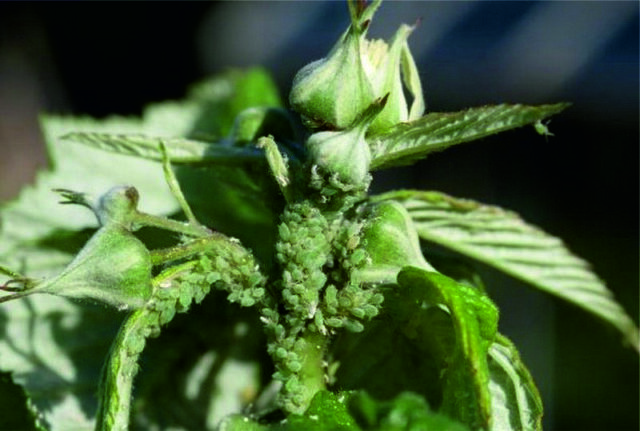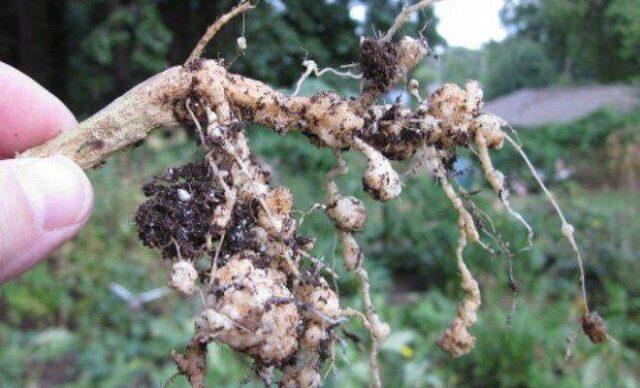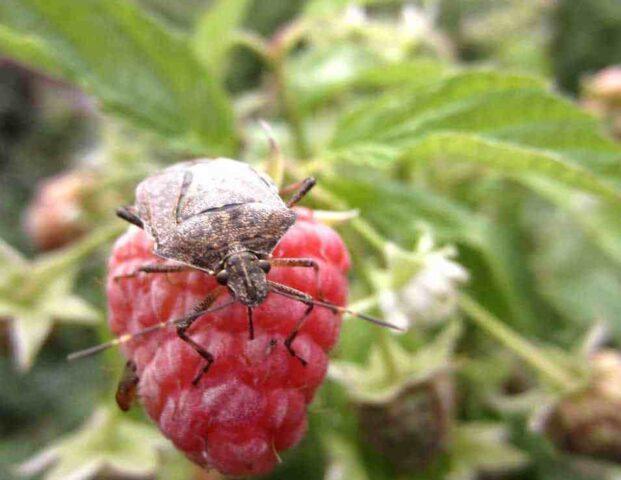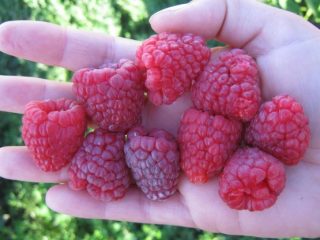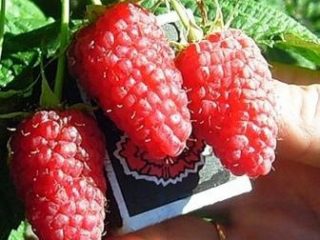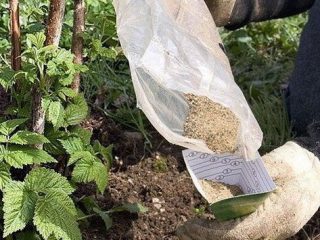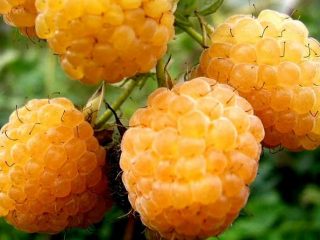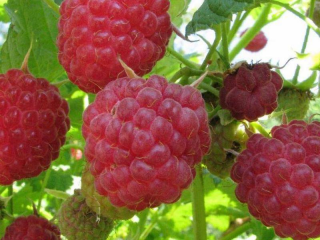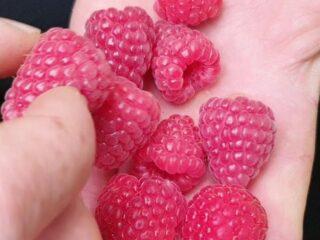Content
Many raspberry varieties and hybrids are distinguished by their general hardiness, including high resistance to pathogenic microflora. But culture is not completely immune from diseases. One of them is the raspberry mosaic.
Description and types of mosaics
Mosaic disease, or raspberry mosaic, is a collective name for a group of diseases. They have a common main symptom - “variegation” in the color of leaf blades, on which areas with normal color alternate with pale green, almost white or yellow.
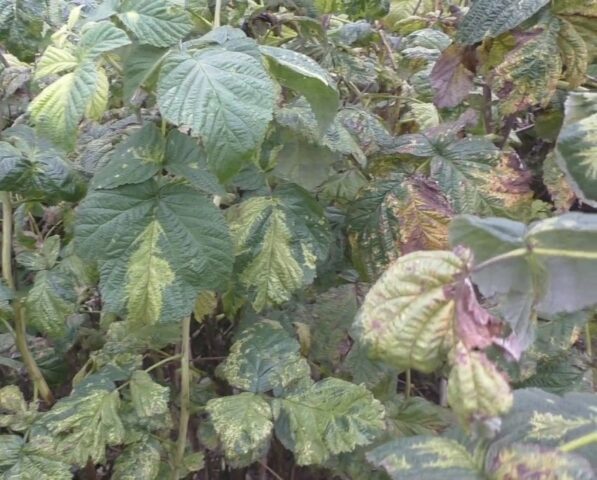
Mosaic raspberry bushes will not kill, but they also cannot “cure” on their own or with the help of a gardener.
The most common types of raspberry mosaics are mottling, ring spotting and yellow netting (or chlorotic spotting). In the first case, small yellow spots appear on a general green background, in the second - concentric circles, in the third - the entire leaf blade turns yellow, only the veins “stand out” in green.
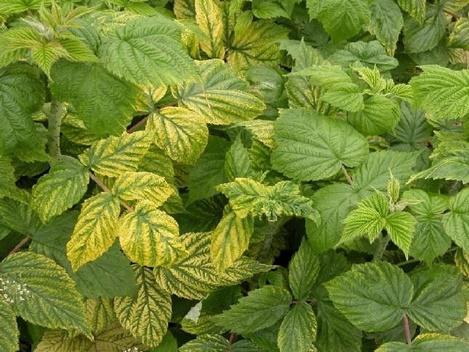
Yellow reticularis can easily be confused with a non-infectious disease - chlorosis
The raspberry mosaic also has “associated” features:
- very slow development of the bush or its complete stop, a gradual decrease in its height;
- a minimum of basal shoots, replacement shoots, gradual degeneration and deformation of “offsprings”;
- thinning, twisted young shoots;
- “simplification” of the shape of leaf plates, their asymmetry, “lumpyness”, “coarsening”, roughness to the touch;
- dying shoot tips;
- very low yield, small, dry, almost “woody” berries, devoid of typical taste and aroma.

Leaves affected by the disease gradually become deformed
Reasons for appearance
In most cases, pathogens of different types of mosaics are carried by pests that attack raspberry bushes:
- aphid;
Aphids can attack almost any garden crop
- spider mites and other herbivorous mites;
It is difficult to see spider mites with the naked eye; you will have to rely on the “traces” they leave behind.
- root and stem nematodes;
You can definitively verify the presence of a root nematode only if you dig up a bush
- bedbugs.
Bugs on plants are not dangerous to humans, the biggest problem is the unpleasant odor
- Sucking insects “pierce” the leaves, feeding on plant sap. The resulting microdamages become a “gateway” for raspberry mosaic viruses. They will also be “created” by other “wounds” on the leaves and shoots.
The gardener himself can become a carrier of the raspberry virus if he neglects to disinfect equipment and tools. He also spreads the disease by transplanting root shoots from bushes infected with the raspberry mosaic virus or grafting cuttings from them onto healthy plants.
If there is at least one infected bush in a raspberry bush, the raspberry mosaic virus spreads very quickly. Contact between the leaves or shoots of a diseased plant and a healthy one is enough - there are almost always microdamages on them.
How to get rid of mosaic on raspberries
Despite a detailed description of the various forms of the virus and the disease process, there is no information about its origin and “life activity”. Therefore, no treatment methods have been developed for raspberry mosaic. Both agrochemicals and preparations of biological origin are powerless against any viruses, not to mention folk remedies.
Biological products
Biological products in the fight against raspberry mosaic can only be used indirectly, to improve the quality of the substrate. The experience of gardeners shows that the disease appears much less frequently in areas where the soil is regularly treated with EM preparations.
These are microbiological products containing lactic acid, photosynthetic, nitrogen-fixing bacteria. They “help” plants better absorb nutrients from the soil, which helps strengthen their immunity and overall endurance.
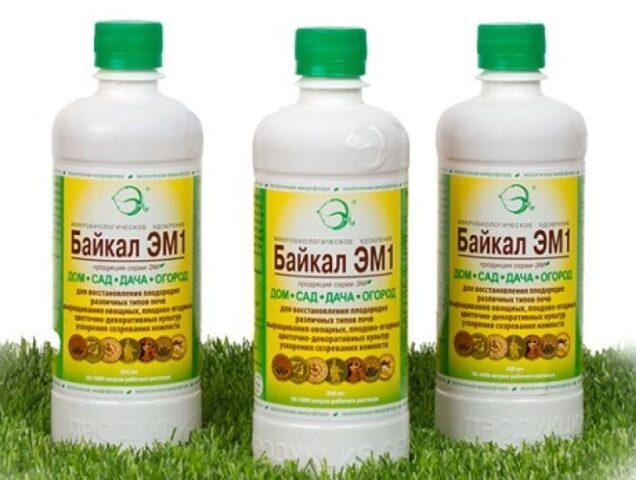
Bacteria contained in EM preparations “inhibit” pathogenic microflora in the soil
Chemicals
Agrochemicals against mosaic on raspberries are powerless, but with their help you can fight insects that spread the virus. The easiest way to get rid of aphids and bedbugs is to use any universal broad-spectrum insecticides that will help. Spider mites are not insects, so other drugs are used against them - acaricides and insectoacaricides.To combat the nematode that spreads the raspberry mosaic virus, there are also specialized chemicals. Most of them are long-acting and are added to the soil during planting.
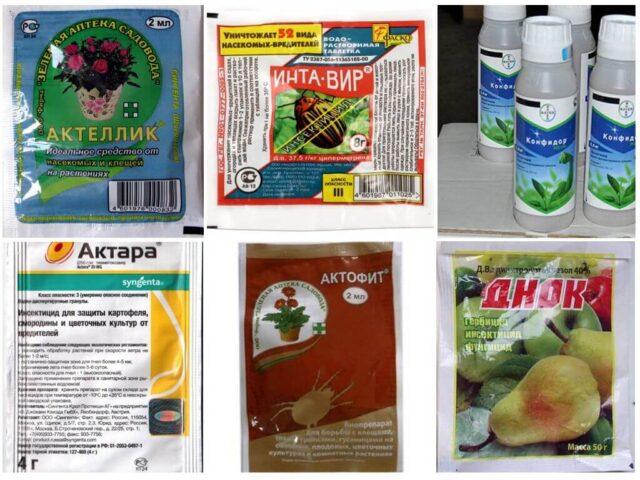
Chemicals should not be used if there is less time left before harvest than indicated in the instructions.
Folk methods of struggle
Folk remedies are an alternative to insecticides and other agrochemicals. But they will be effective against aphids only if the pests are noticed in time and do not have time to breed en masse. They are also used to prevent insects that carry the raspberry mosaic virus from “settling” on the bushes. Nematodes, bedbugs and spider mites are not very susceptible to folk remedies.
What can be used against aphids that carry raspberry mosaic virus:
- plants with a pungent aroma surrounding the perimeter of the bed or infusions prepared from cut greenery;
- strong-smelling liquids;
- mustard powder, tobacco dust, ground hot pepper;
- foam of laundry, tar, green potassium soap.
Raspberry varieties resistant to mosaic
There are no varieties and hybrids of raspberries that are guaranteed not to be infected with the mosaic virus. However, its varieties, distinguished by their general hardiness, ease of care and high cold resistance, are relatively rarely affected by it.
Beauty of Russia
Large-fruited, high-yielding variety. Bushes 1.5-2 m high, not spreading. The berries are elongated-conical, one-dimensional (10-12 g), very sweet and aromatic. The pulp is juicy, relatively dense, the seeds are medium-sized. Productivity – 4-5 kg per bush.
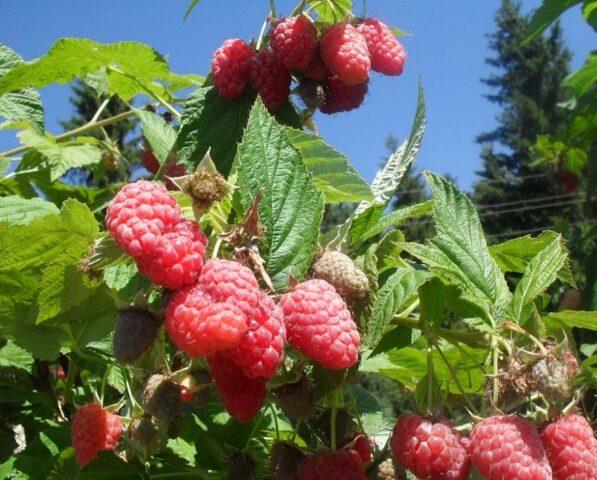
Raspberry Krasa Rossii tolerates cold temperatures down to -35 ° C, but has a very negative attitude towards waterlogging of the soil
Hercules
Remontant large-fruited variety. The bushes are slightly spreading, up to 1.5 m high, “reluctantly” forming replacement shoots. The stems are powerful, densely strewn with thorns along their entire length. The berries are in the shape of a truncated wide cone, weighing 5-6 g (individual specimens weigh up to 10-12 g). Taste, aroma and color are standard “raspberry”, nothing particularly outstanding.

Raspberry Hercules is valued for its keeping quality and transportability, which is very good for cultivation.
Ruby
Mid-late raspberry variety. The bushes are slightly spreading, reaching a height of 1.8 m. The shoots are very powerful, with sparse thorns. The berries are blunt-conical, medium-sized (3.5-4 g), and easily separated from the stalk. The variety is valued for its stable yield (about 2 kg per bush) and excellent taste.

Raspberry Ruby was bred in Bulgaria, so it is sometimes sold under the name "Bulgarian Ruby"
Preventive measures
To minimize the risk of raspberry infection with the mosaic virus, time should be devoted to prevention regularly. Effective measures:
- Planting of zoned varieties and hybrids of raspberries, characterized by general “stress resistance” and good immunity.
- Purchasing planting material from trustworthy suppliers who can guarantee its quality.
- Systematic control of sucking and leaf-eating pests.
- Regular weeding of raspberries.
- Annual pruning.
- Maintaining crop rotation.
- Destruction of wild raspberries on the site. It is almost always infected with mosaic virus and aphids.
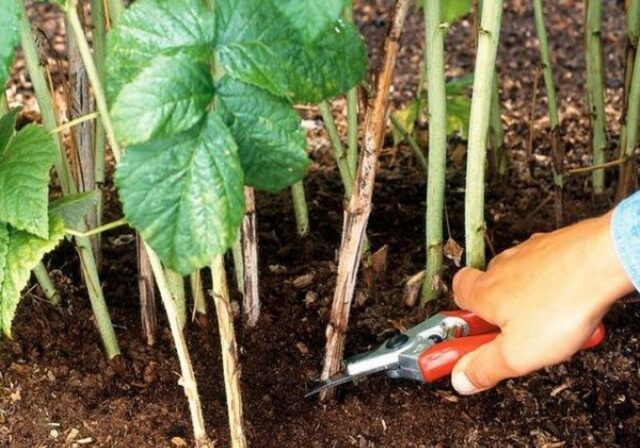
Pruning is necessary to prevent thickening of the bush - many varieties and hybrids are prone to active shoot formation
Conclusion
Raspberry mosaic is the collective name for a group of viral diseases that cannot be treated with modern means. However, a gardener can minimize the risk of their development through competent and regular prevention. In advanced cases, bushes must be disposed of immediately.
